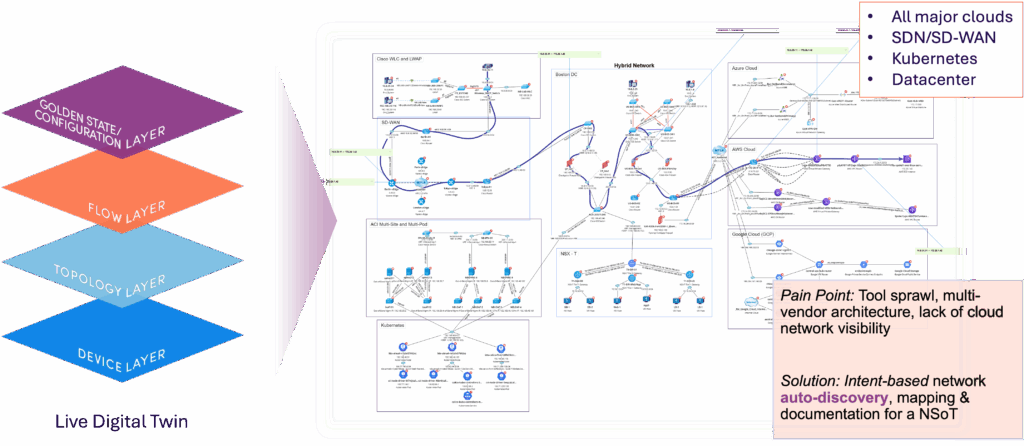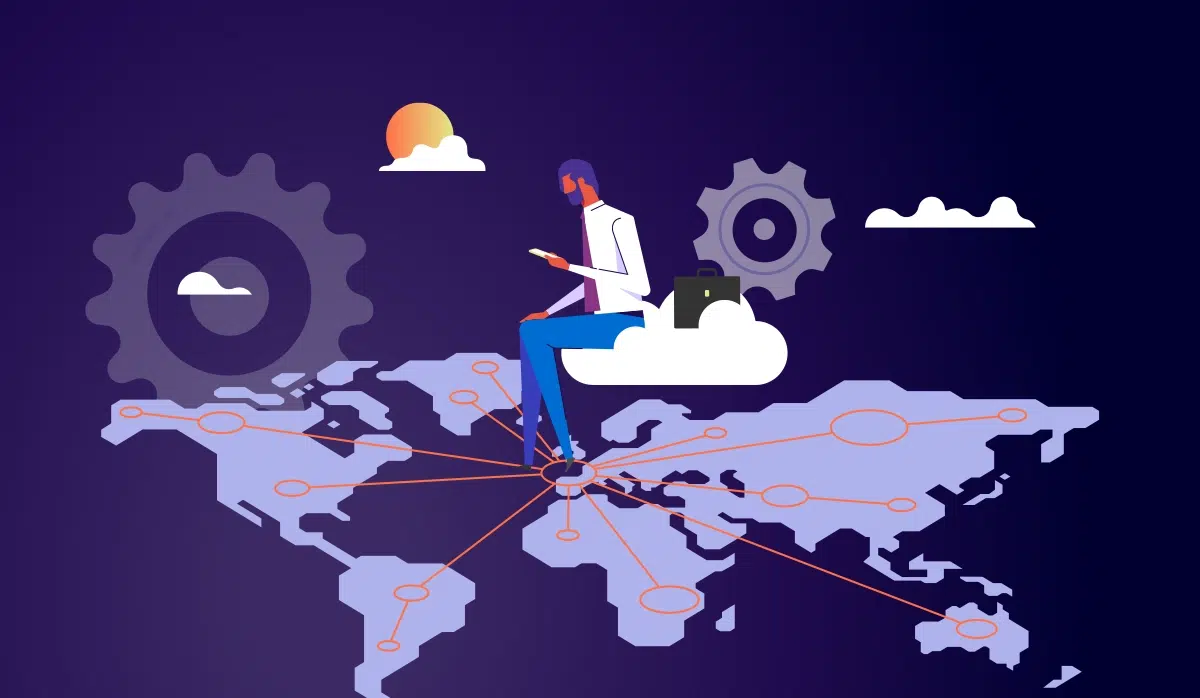Beyond the Map: The Real Value of Network Visibility
by Valerie DiMartino Oct 30, 2025
There was a time when a network could be captured in a single Visio diagram. Teams could gather around a printed map and literally point to where a problem was occurring. Those days are gone—replaced by a new reality with hybrid networks spanning data centers, public clouds, and countless infrastructure vendors and versions. The static maps that once brought clarity now, if they even exist, contribute to confusion, showing an idealized version of a network that no longer exists.
The challenge is fragmentation. There is no unified infrastructure view because our traditional bolt-on tool approaches are creating obstacles. We can monitor device health, cloud utilization, and security alerts, but we lack a real-time picture of our networks. More critically, we’re missing the connective tissue that turns these data points into actionable insight. We are collecting puzzle pieces from different boxes, and a clear picture never emerges.
The Ongoing Network Operations Crisis – Tool Sprawl and Alert Fatigue
Network teams are facing a profound operational crisis. It’s not that we lack monitoring tools—if anything, we have too many. The real problem is that we’re drowning in data while starving for insight. We can see device health in one console, cloud performance in another, and security alerts in a third, but nobody can show us how it all connects.
This fragmentation has tangible business costs:
- Troubleshooting that takes hours instead of minutes
- Documentation that’s outdated before it’s even finished
- Security gaps that go unnoticed until it’s too late
- Teams wasting time correlating data instead of solving problems
As Gartner® states, “As organizations accelerate cloud and hybrid infrastructure adoption, the ability to map component relationships and dependencies accurately becomes essential to minimize unplanned outages, track availability and enable effective service delivery.”1
The Breakthrough: From Static Maps to Living Intelligence
The solution to modern network complexity isn’t more monitoring—it’s deeper understanding. Enter the “Network Digital Twin”: a living replica of your entire hybrid environment that comprehends not just what devices you have, but what they’re designed to accomplish.
This represents a fundamental shift from passive observation to active understanding. Unlike static diagrams, NetBrain’s Intent-Based Digital Twin captures your network’s DNA—decoding the design principles, security policies, and business objectives that define its purpose. It continuously compares ideal states against real-world operations, transforming your network from a collection of devices into intelligence for automation to leverage in problem prevention.

Where Visibility Creates Real Business Value
When you bridge the gap between visibility and understanding, transformative things happen:
- Multi-Vendor Mapping and Pathing Becomes Contextual
Dynamic maps become interactive workspaces where network, security, and cloud teams share the same accurate, real-time understanding. By integrating data from tools like ServiceNow, Datadog, and Splunk directly into network visualizations, everyone operates with full context creating a single source of network truth. - Troubleshooting on Maps Becomes Collaborative
Instead of wondering what troubleshooting operators and engineers have already done, you can work together in a portal while visualizing everyone’s network diagnostics right on the mapped area of the network. Then, pair that with the intelligence of a platform that can auto-remediate to the golden configuration or state. - Documentation Becomes Audit-Ready
AI-powered documentation lets you create and export custom reporting using the current knowledge of your network. Need a compliance report for auditors? Simply ask “show me all firewall rule changes from last quarter” and receive accurate, formatted results in moments.
The New Frontier of Network Operations
This evolution from basic mapping to deep understanding represents more than a technological upgrade—it’s a fundamental shift in how we approach network operations. Teams move from reactive troubleshooting to proactive assurance, from maintaining infrastructure to driving business innovation.
In an era where network complexity is accelerating, simply having a map is no longer sufficient. The organizations that will lead are those that truly understand their networks—not just the individual components, but how they interact, why they behave as they do, and what they need to deliver business outcomes.
The journey from confusion to clarity begins when we stop looking at our networks as collections of devices and start understanding them as dynamic systems designed to serve our business objectives.
1Gartner, How to Successfully Choose an IT Dependency Mapping Tool, By Ankita Hundal, Roger Williams, 3 September 2025.
Gartner is a registered trademark and service mark and Magic Quadrant is a registered trademark of Gartner, Inc. and/or its affiliates in the U.S. and internationally and are used herein with permission. All rights reserved.
Gartner Peer Insights content consists of the opinions of individual end users based on their own experiences with the vendors listed on the platform, should not be construed as statements of fact, nor do they represent the views of Gartner or its affiliates. Gartner does not endorse any vendor, product or service depicted in this content nor makes any warranties, expressed or implied, with respect to this content, about its accuracy or completeness, including any warranties of merchantability or fitness for a particular purpose.
Related
Top 5 Takeaways from NetBrain LIVE 2025 that Redefine NetOps Outcomes in 2026
NetBrain LIVE 2025 wrapped up last month, but delivered a bold prediction: AI and automation will halve Mean Time to Repair (MTTR) every 12-18 months. More specifically, CEO Lingping Gao...
The Era of Proactive Network Operations
For decades, network teams have been fighting fires with limited visibility. We can see devices, interfaces, and links, but we’ve been missing the most critical piece: understanding what the network...
The Three Levels of Self-Healing Networks: From Auto-Detection to True Autonomy
At 2 AM on a Tuesday, a primary data center link fails. By the time the monitoring alerts wake an on-call engineer, customer transactions have been failing for 12 minutes....
We use cookies to personalize content and understand your use of the website in order to improve user experience. By using our website you consent to all cookies in accordance with our privacy policy.

